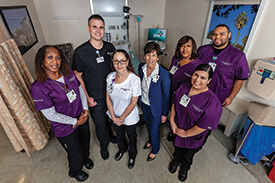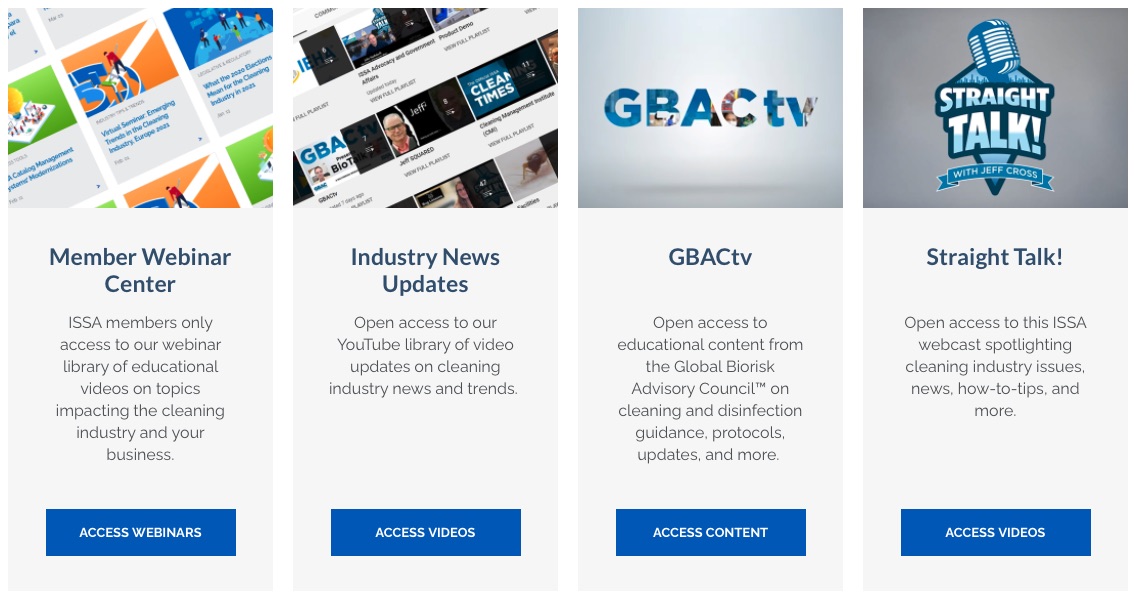Articles
Creating a Culture of Clean
Categories: ISSA Member Spotlight
By Graeme Golucki | June 18, 2018 << Back to Articles
A couple years ago, Sutter Medical Center in Sacramento, CA, faced a challenge: The hospital needed to combine its current staff with staff from the nearby Sutter Memorial Hospital, which had been closed. This task also meant taking on some of the former hospital’s business. This consolidated staff then had to effectively function to meet the hospital’s demands.
Debbie Sandberg, an environmental services (EVS) veteran, was named EVS director for Sutter Medical shortly after this consolidation. Sandberg was tasked with using her more than two decades of EVS experience to develop a successful and collaborative culture among the staff.
“When I first started, there was an established culture [at Sutter Medical] and a culture that was carried over from the Sutter Memorial staff,” Sandberg says. “In the beginning, it was difficult to get everyone working in sync. Each team had its own ways of doing things and different ideas on procedures. We had to really work to mesh the two work ethics together. In a way, I felt as if we were merging two very different families together into one cohesive unit.”
Developing a Team-Based Atmosphere
A savvy EVS veteran, Sandberg deployed several strategies to create a standardized and efficient team. “One of the first things I did was institute a daily employee engagement system, or ‘shift huddles’ as we call them,” she says. “Before the start of every shift, staff get together to discuss daily announcements, go over any pressing safety issues, and review injury rates and room turnaround times. But we also keep these huddles fun—there’s stretching and music. And then after our shift meetings, the staff takes that high-energy out on to the hospital floor, sharing it with nursing, respiratory, and all the other teams throughout the building.”
Another way Sandberg has helped her staff feel valued is by developing an effective employee empowerment program. “We’ve been taught as leaders that people come to us to fix their concerns,” she says. “But instead of just listening to workers’ problems and trying to resolve them on my own, I’ve asked for their solutions as well. This approach gives my staff a voice and has led to a huge improvement in overall positivity. Workers feel as if their opinions really do matter. We have [overall] 4,100 employees here at Sutter Medical, but I like to say we also have 4,100 decision-makers.”
A Positive Standard Environment
Engaging and inspiring her team is just part of Sandberg’s duties. She also must maintain a high standard, and—like everywhere else these days in the cleaning world—figure out how to do more with less. Staying on top of patient satisfaction through its Hospital Consumer Assessment of Healthcare Providers and Systems (HCAHPS) score helps the hospital to achieve this. “We’ve developed a HCAHPS ambassador group, which has been extremely helpful in ensuring we exceeded expectations. Much like doctors make their rounds, our HCAHPS ambassadors visit with patients and provide the best EVS experience and best possible overall experience when they are a guest at our hospital. I then meet with the HCAHPS team to discuss the scores and patient recommendations to find ways to further improve our scores.”
Patient satisfaction is extremely important, but also critical to any hospital EVS team is room turnaround times. Sutter Medical’s staff has required benchmarks for not just time, but cleanliness. “We use quite a few different tools to monitor our EVS staff,” Sandberg says. “Keeping track of the time it takes for staff to turnover a room is the easy part; you just need a stopwatch. The difficulty is making sure the room is clean and sterile as well. Our management team monitors each staff member several times a month through spot checking with a fluorescent gel. After a room is turned over, management will look for this gel with a black light. No gel means a clean room.”
Sandberg and her management team make a point of using benchmarks as motivating tools for their staff. “Through our training, competencies, and seven-step cleaning process, we’ve also worked to develop a fun competition between employees,” she says. “Benchmarking results are posted and discussed during our daily engagement sessions so the staff can see how they measure up against each other. I also work with the staff on areas that can use individual improvement. These evaluations really instill a sense of pride in staff members and help them stay motivated day in and day out. They really want to provide the best possible patient experience.”
Staying Ahead
Sandberg has decades of EVS experience, but she also knows that even an expert can use some extra assistance, whether it’s for keeping up on the latest trends or finding ways to develop training programs. “If you are in tune with your industry, regardless of what line of work you’re in, you need to seek out continuous growth, education, and innovation,” she says. “If you want to be successful, look to established organizations for support and feedback. Professional organizations like IEHA, and now ISSA, give leaders in our field opportunity to grow and raise the next generation of EVS. Through online education and educational conferences, ISSA helps us recruit and retain talent.”
While educational programs help Sandberg retain and engage staff, Sutter Medical also has another way of staying on the cutting edge—robotics. “The recent star of our hospital staff is Xhaiden I,” she says. “We’ve had Xhaiden 1 for a little over a year. It is a germ-zapping robot that uses ultraviolet light to destroy harmful microorganisms, reducing the risk of infections in hospital rooms.”
Some industries may view robots as job-killers but the staff at Sutter Medical has embraced Xhaiden. “First, I assured the staff no one needs to worry about their jobs,” Sandberg says. “As great as the robot is, it can’t run itself. Someone still needs to maneuver and operate it. Since we started using Xhaiden in our cleaning protocols, our infection rates have declined. And as an unexpected bonus, since we’re one of the first hospitals in the area to utilize robotics, we’ve garnered a lot of attention from local media. The whole program has been a huge success, and we’re working to add another robot to our staff.”
A Balancing Act
Sandberg’s role is a demonstration of the conundrum many in-house service providers face in today’s industry: balancing strict and precise standards with a fast-paced environment. On top of having to balance these two needs, Sandberg had the added challenge of combining two established workplace cultures into one. She has confronted these potential pitfalls head on. By embracing new technologies and developing an enthusiastic team-based culture that is energized and engaged to exceed quality standards she has engineered the “secret sauce” for a successful EVS department.
About the Author.
Graeme Golucki is ISSA's digital strategy editor and can be reached at [email protected]; phone, 800-225-4772 (North America) and 847-982-0800.





